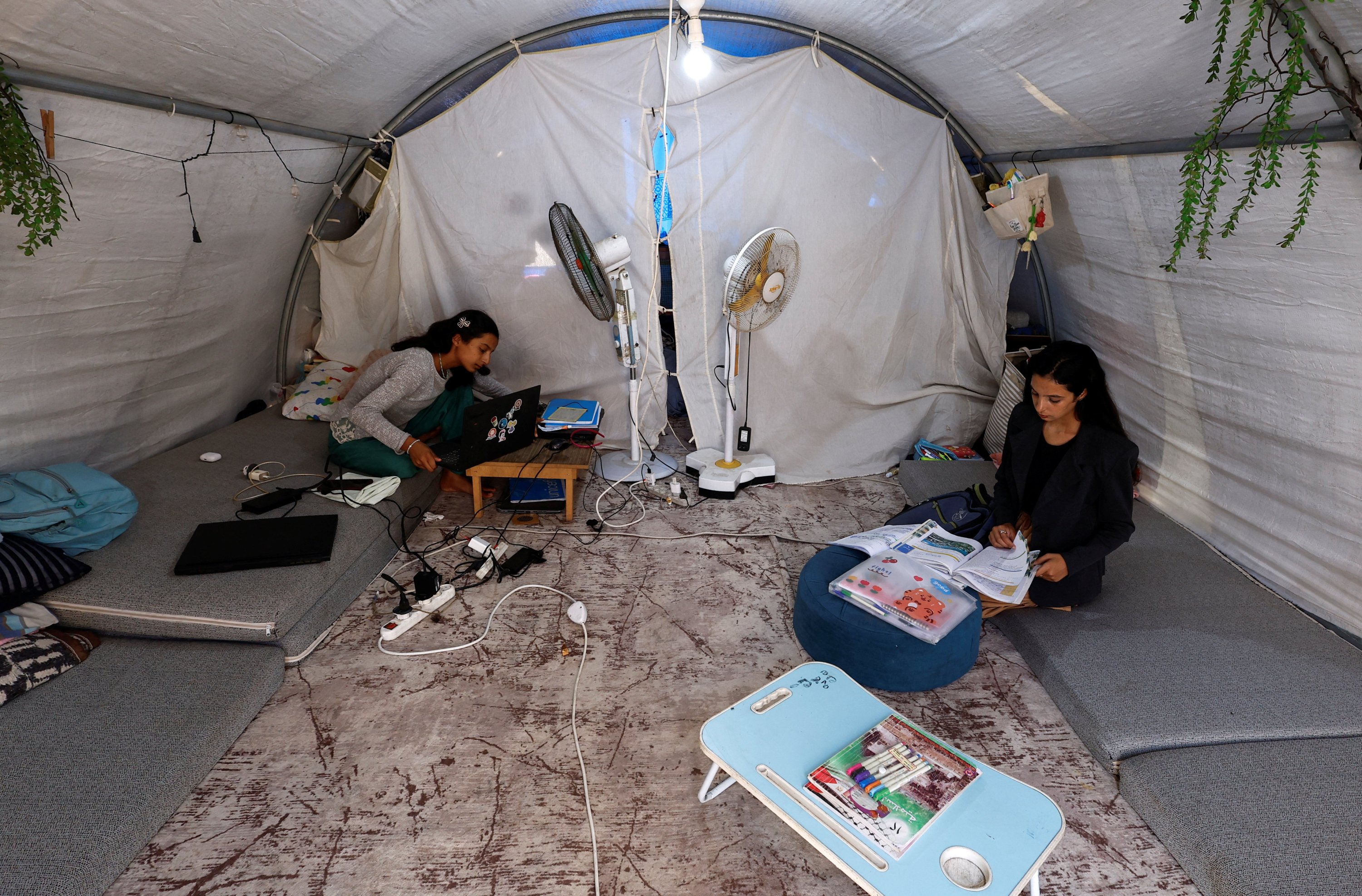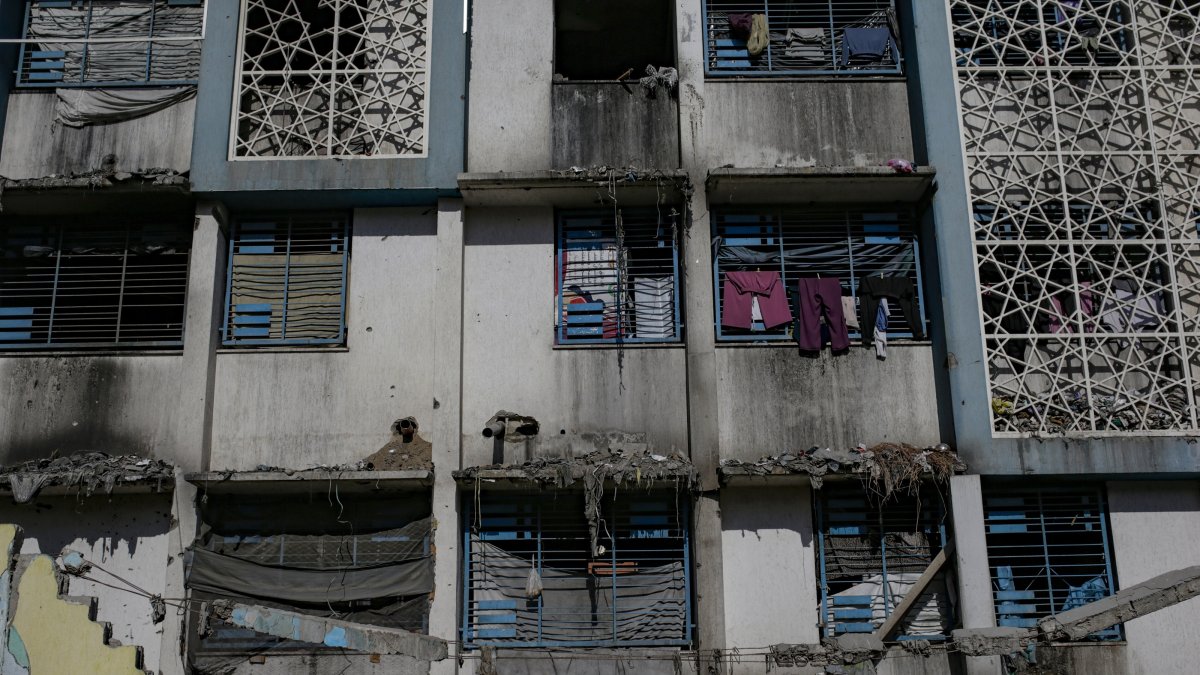Gaza’s education system lies in ruins after two years of relentless war, leaving hundreds of thousands of children without classrooms or hope, UNICEF warned Thursday, saying the territory is on the brink of losing an entire generation to conflict and despair.
“This is the third year that there has been no school,” Edouard Beigbeder, the U.N. agency’s regional director for the Middle East and North Africa, told AFP in Jerusalem on Thursday after returning from the Palestinian territory.
“If we don’t start a real transition for all children in February, we will enter a fourth year. And then we can talk about a lost generation.”
The devastating conflict between Israel and Hamas has reduced swaths of Gaza to rubble, displaced the vast majority of its population at least once and crippled public services.

Palestinian student Raghad Loai Mhanna, who passed her high school exams while living in a tent after being displaced during the war, sits inside her tent in Deir al-Balah, central Gaza Strip, Oct.19, 2025. (Reuters Photo)
The destruction “is almost omnipresent wherever you go,” Beigbeder said.
“It is impossible to imagine 80% of a territory that is completely flattened out or destroyed,” he added.
A U.S.-brokered cease-fire that took effect earlier in October has allowed UNICEF and other education partners to get about one-sixth of the children who should be in school into temporary “learning centers,” Beigbeder told AFP.
“They have three days of learning in reading, mathematics and writing, but this is far from a formal education as we know it,” he added.
Beigbeder said such learning centers, often located in schools or near displacement camps, consist of metal structures covered with plastic sheeting or tents.
He said there were sometimes chairs, cardboard boxes or wooden planks serving as tables, and that children would write on salvaged slates or plastic boards.
“I’ve never seen everyone sitting properly,” he added, describing children on mats or carpets.
‘Inaccessible’
Despite the cease-fire, Beigbeder said the situation for Gaza’s education system was catastrophic, with 85 percent of schools destroyed or unusable.
Of the buildings still standing, many are being used as shelters for displaced people, he said, with the situation compounded by the fact that many children and teachers are also on the move and trying to provide for their own families.
Gaza’s school system was already overcrowded before the conflict, with half the prewar population under the age of 18.
Of the schools managed by the West Bank-based Palestinian Authority alone, Beigbeder said about 80 out of 300 needed renovation.
He said 142 had been completely destroyed, while 38 were “completely inaccessible” because they were located in areas to which Israeli troops have withdrawn under the cease-fire.
The U.N. agency for Palestinian refugees (UNRWA) said on Oct. 18 that it was launching a “new e-learning school year” with the aim of reaching 290,000 pupils.
On Friday, U.S. Secretary of State Marco Rubio accused UNRWA of being a “subsidiary of Hamas” and said it would play no role in postwar Gaza.
‘Lost generation’
Beigbeder said it was vital to put education “at the top of the agenda” and rebuild a sense of social cohesion for Gaza’s children, almost all of whom are traumatized and in need of psychological support.
UNICEF said one of the priorities was getting permission at border crossings to bring in materials to set up semi-permanent schools, as well as school supplies that have been blocked as they’re considered nonessential.
Israel repeatedly cut off supplies into the Gaza Strip during the war, exacerbating dire humanitarian conditions, with the U.N. saying it caused famine in parts of the Palestinian territory.
The World Health Organization said Thursday there had been little improvement in the amount of aid going into Gaza since the cease-fire took hold — and no observable reduction in hunger.
“How can you rehabilitate classrooms if you don’t have cement? And above all, we need notebooks and books … blackboards, the bare minimum,” Beigbeder said.
“Food is survival. Education is hope.”

The Daily Sabah Newsletter
Keep up to date with what’s happening in Turkey,
it’s region and the world.
SIGN ME UP
You can unsubscribe at any time. By signing up you are agreeing to our Terms of Use and Privacy Policy.
This site is protected by reCAPTCHA and the Google Privacy Policy and Terms of Service apply.

